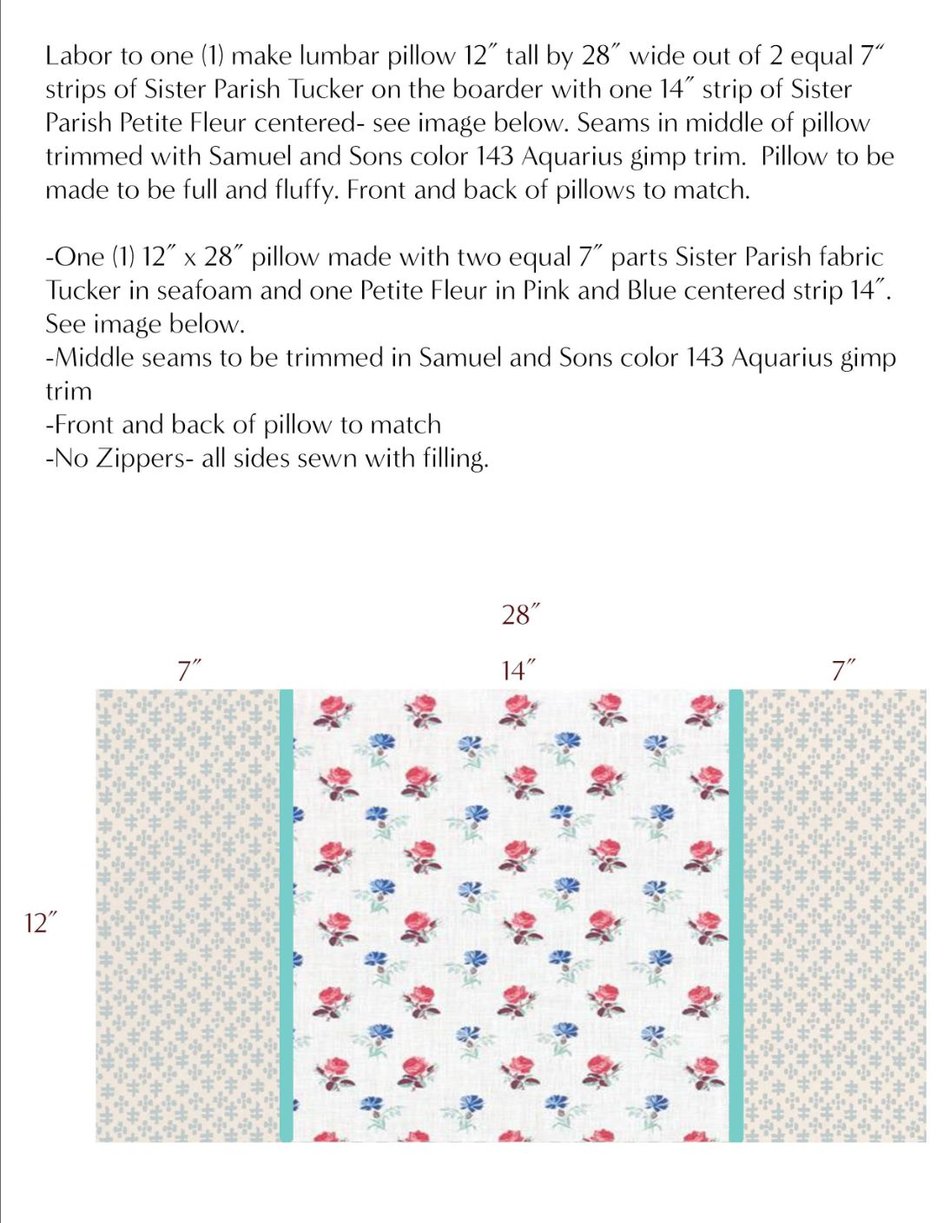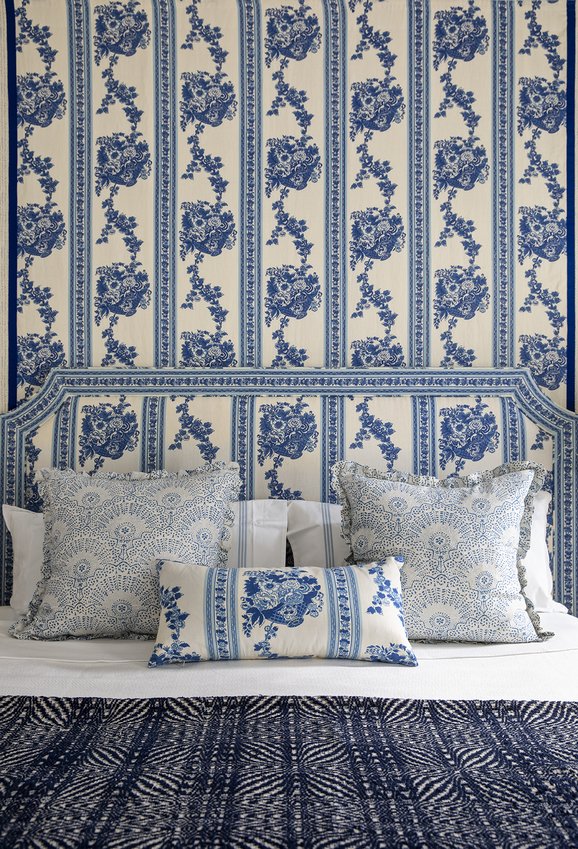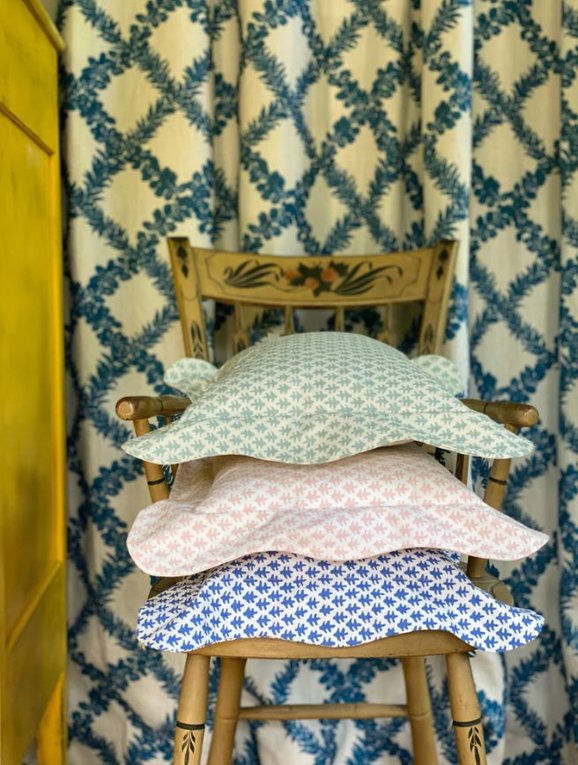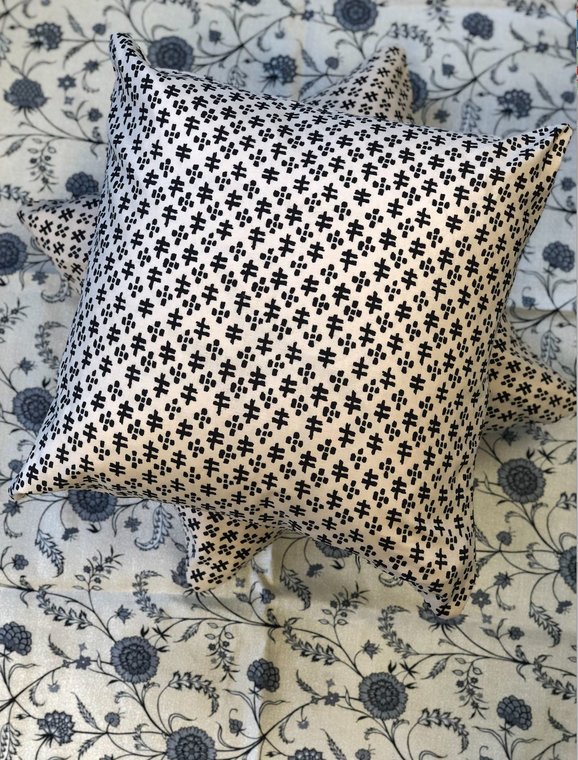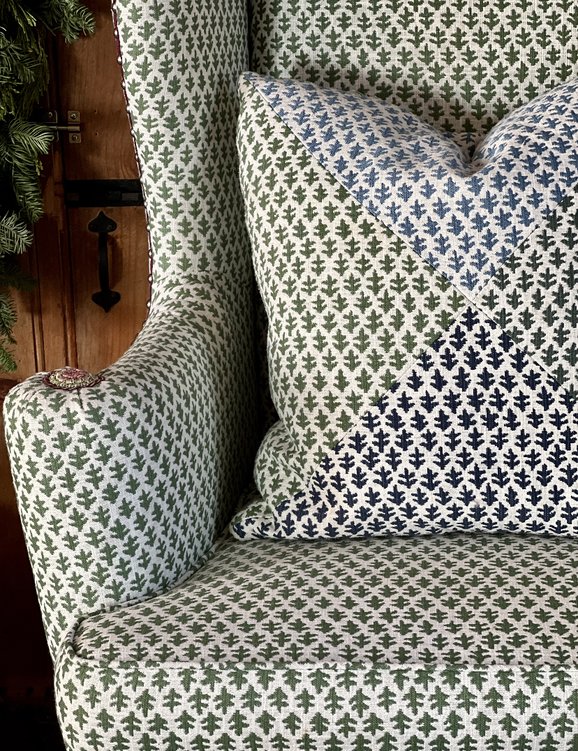Pillow Guide
How to Tackle Custom Pillows
Once you understand a few essential pillow fundamentals, you can go wild with textiles and trim to create truly unique pillows that add both character and comfort to your rooms. Whether you are working with a designer or doing it on your own, it is important to consider pillows at the very beginning of your project.
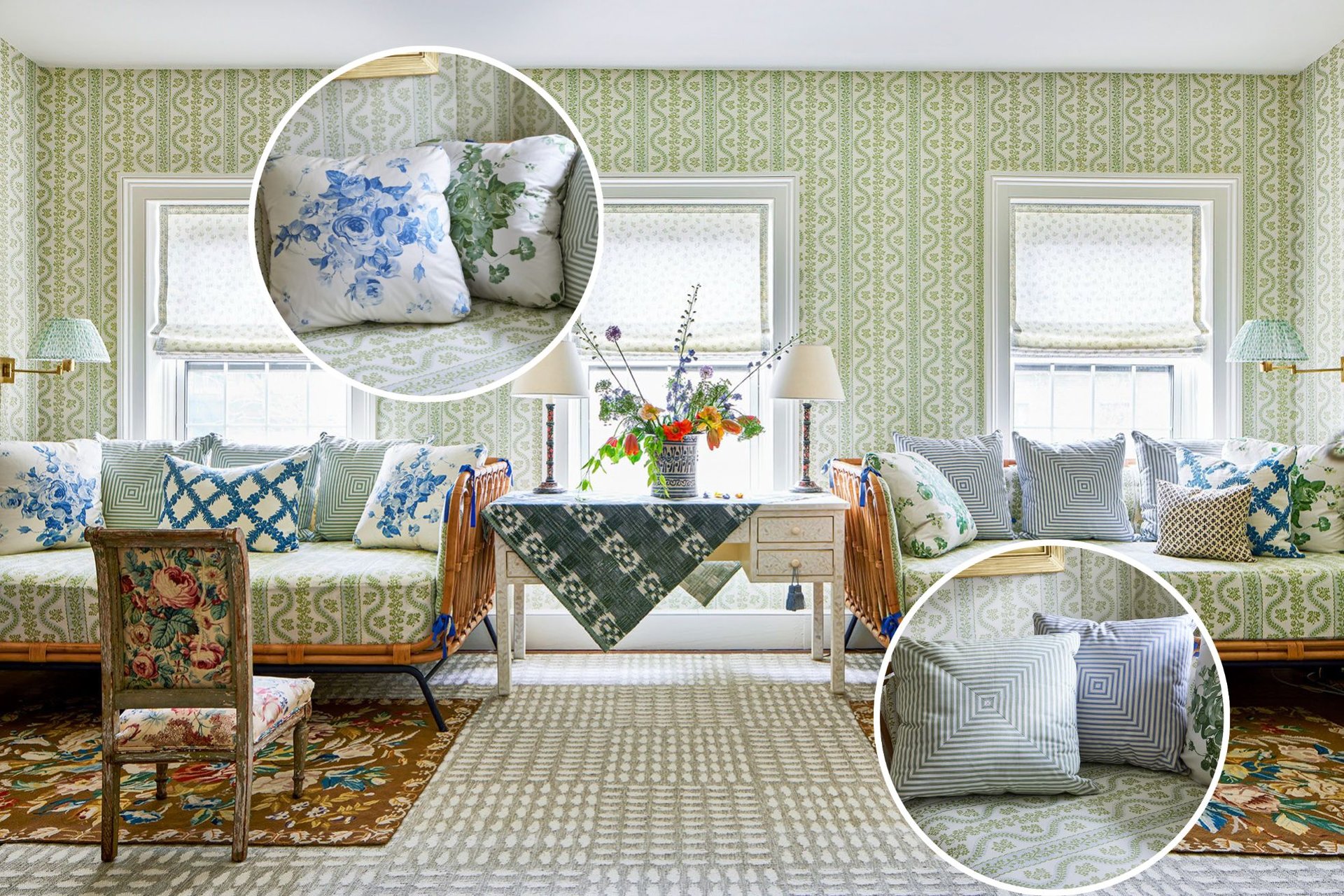
Step 1: Select the Size
Pillows for a Sofa:
Here is the classic formula for sofa pillows: a pair of (2) 20” squares for each corner with a lumbar pillow (a rectangular pillow) in the middle. The size of the middle lumbar pillow depends on the length of your sofa. For an eight (8) foot long sofa, a standard lumbar pillow size is 24” x 12” high.
Pillows for a Bed:
Here is the classic formula for a bed: a pair of (2) large euro pillows to sit in front of your sleeping pillows with a lumbar pillow (a rectangular pillow) in the middle. A standard euro is 26” x 26”. The size of the lumbar pillow in the middle depends on the size of your bed. For a king size bed, I recommend a lumbar that is 24” x 16”. I like a taller lumbar pillow for a king size bed that looks full and luxurious!
Pillows for a Chair:
For an armchair, I like to make a pillow that “fits the back.” This simply means that the length of the pillow is equivalent to the length of the inside seat back and the height is dependent on the height of the inside seat back. The height should be approximately a quarter to half the size of the inside seat back.
Step 2: Select Corner Style & Trim
Blind Seams:
A blind seam is a seam that disappears in the edge of a pillow.
Self Welt:
To create a self welt, you use the same fabric as the pillow itself and add a welt to the perimeter of the pillow. This is a simple, yet tailored finishing touch.
Contrast Welt:
To create a contrast welt, you use a different fabric to the pillow itself and add a welt to the perimeter of the pillow. This is a way to add more color or interest to the pillow in a subtle way.
Tape Trim on The Seam:
To add a tape trim to the seam, you select a tape trim that is about 1” wide and apply it to the perimeter of the pillow. The tape trim wraps around the pillow and sits directly on top of the seam. This is a way to add more color in a more impactful way.
Double Tape Trim on The Seam:
To add a double tape trim to the seam, you select two skinny gimp trims (about 1/2” wide each ) and apply them back to the back on the seam. This is a way to add more color in a more impactful way.
Step 3: Pillow Fill
For a full and plump look, we recommend ordering an insert that is 2" larger than the size of the pillow case.
For example: if you purchase a pillow cover that's 20"x20", purchase a pillow insert measuring 22"x22".
For lumbars, we typically recommend purchasing an insert the same size as the pillow cover to help prevent overstuffing.
The inside of the insert also matters. We recommend ordering inserts that are 90% feather, 10% down. This will create a not too soft, not too firm pillow that is supportive yet flexible!
Step 4: Select your Textile
Now it’s time for the fun part. It’s time to play with textiles!
Consider what you are making and how the textile will look in the style you want the workroom to make. Order samples off of our site and play around with them. We offer samples of all of our patterns. This fabric has to ultimately play off the other patterns in the room, so create a little scheme for yourself.
Our sales team is a resource you can always email or call for help.They know our collection backwards and forwards. We also sell swatch sets that are categorized by color and even some of my favorite schemes in the collection. If you are working with a designer, they will create a scheme for you that includes the pillow fabric.
Enjoy this step! This is the time to let your creativity flow or where your designer can show off their creativity and create something truly unique for you.
These next two steps are only important if you are doing it yourself.
- After you’ve made your decision, check stock on our website. If we have the textile in stock, you can place the order directly off the site. If there is no stock, email us and we will tell you the lead time on the textile and you will place the order directly through a sales person.
- If you ship directly to the workroom, make sure to track your fabric and ensure the workroom receives it. Once they have received it, confirm a completion date with the workroom. Typically a workroom won’t give you a completion date until they receive the fabric.
Pillow Inspiration
Pillow Pattern Play
As I mentioned above, after you have an understanding of pillow fundamentals, you can begin to play around with color and pattern. Below is an example work order to a workroom for a fun lumbar pillow I created for a chair in my kitchen. I hope this inspires you to take some risks and make bold choices with pillows of your own!
